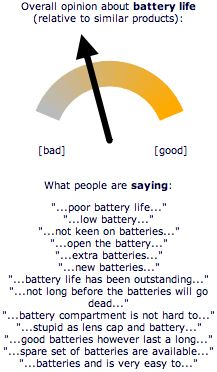Among other creepy things Facebook knows about you, the beloved social network can predict when you’re relationship status is about to change from single to…not single.
Based on heaps of data from 2010-2013, it recognized a pattern that timeline posts between two Facebook users steadily ramp up in the 100 days before, and peak 12 days before their relationship is made Facebook-official. Public interactions decline thereafter (though become “sweeter” in sentiment).
Like Target identifying a teen’s pregnancy before her father, Facebook’s is an example of big data, machine learning and deep neural networks in action.
Ecommerce is on the verge of a big shift driven by big data and intelligent technologies.
This shift is towards a more efficient, personalized, even automated customer journey. Emerging personalization tools are designed to mimic the brain, leveraging neural networks and deep learning. Netflix is already moving in this direction, and it’s known Google, Facebook, Amazon, Yahoo and others are also embracing these technologies through startup acquisitions and key hires.
Neural networks and deep learning
Inspired by the central nervous system, Artificial Neural Networks (ANNs) are computational models capable of machine learning and pattern recognition. Deep learning neural networks have more layers of abstraction than ANNs and have the ability to train neural networks to do some pretty incredible things like image recognition, natural language processing, language translation and automatic speech recognition.
What are some of the practical applications for ecommerce?
Natural language processing
Back in 2008, Get Elastic featured Pluribo, a Firefox extension with natural language processing and sentiment analysis capabilities. One useful application was filtering down hundreds of Amazon reviews into a summary of pros and cons.
Unfortunately, Pluribo fell victim to the financial crisis of 2009 and lack of VC funding.
The concept, however, has huge implications for guided selling, alone or in combination with other deep learning tech.
An ecommerce system with a Her-like artificial intelligence could receive a voice query: “I’m looking for a full-frame camera with long battery life, compatible with Mac OSX” and not only deliver personalized results, but can also ask further probing questions that the customer hasn’t thought about. For example, “what types of subjects do you typically shoot?” or “how important is size and weight to you?”
It’s not far off before computers will also recognize emotional signals like excitement, indecisiveness or frustration through voice or facial expression. There’s a current Indiegogo campaign that aims to build the first emotionally intelligent home console that understands conversation, mood and can react to these emotions with conversation. While an emotionally intelligent ecommerce application is dialoging with a customer, it can also tap into an aggregate of behavioral and sentiment data to suggest the most likely relevant alternatives and help the customer arrive at a confident purchase decision.
Image recognition
Google is working on giving computers the ability “see.” It’s already built a tool that can recognize human faces, body parts and…cats…the most common contents of Youtube stills and Google Hangouts.
The ability to search for matching products based on Google Glass snapshots, pictures on the ‘Net or other images offers a new way to search and discover products. Glass may play the role in identifying your eye fixation, further giving the machine context of what in the field of view you’re interested in.
Pinterest recently pinned down and acquired a visual search technology to make searching for photos in context much easier. Rather than depending on user keyword tagging, visual search will identify images that match a word or other images (e.g. similar to pins you’ve already made).
Imagine the implications for an ecommerce store. Via the Pinterest API, an ecommerce application with visual search functionality could look at a board or collection of boards and profile a customer’s tastes and intent. Or, a customer could upload a photo of anything (taken from a smartphone, Google Glass or found online) and match it against a product catalog.
Ecommerce marketers that curate Pinterest boards could automate the process and discover far more than a human could with just keyword search and good luck.
Anticipatory purchases
The popular audio-recognition app Shazam now has an always-on feature that listens for audio all day long, tags songs that don’t exist in your library, and makes them available for your perusal, saving you the hassle of unlocking your phone, loading the app and nearly causing an accident in your car (or whatever your context).
Imagine with machine learning, Shazam and products like it could intelligently filter your auto-tags to what you’d most likely be interested in based on your existing library. And further than that, with deep neural networks, be able to decide which to go ahead and add to your library, even making a purchase on your behalf.
Sound crazy? Amazon recently filed a patent for “anticipatory shipping,” which ships and order before it’s even placed. Amazon’s wealth of order history, search, wish list and click stream data may one day be leveraged this way.
While at the moment, it’s just a patent, and we can foresee all kinds of snafus that can arise from making decisions on behalf of (and charging) customers, it’s not unreasonable to envision a day when menial tasks like purchasing groceries, sundries and gifts can be outsourced to an efficient, intelligent machine.
It’s about smart data
Attending several sessions at Digital Entertainment World recently, I have consistently heard panelists refer to data and context driving digital experiences forward.
One panelist remarked, “It’s not about Big Data, it’s about smart data.”
Deep learning, natural language processing, image recognition and anticipatory personalization (whether purchase, shipping or other recommendations) all aim to make smarter use of the sea of data and content we’re rolling on. All of these technologies are in development, it’s only a matter of time before the ecommerce industry realizes its potential and bakes it into digital experiences.







